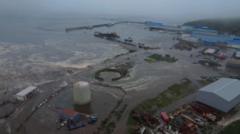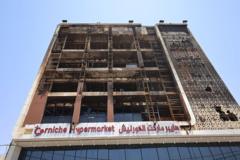The quake, recorded at a depth of 6.2 miles, has prompted aftershocks in the surrounding areas, raising concerns about safety and further developments.
**Severe Earthquake Strikes Tibet Region of China**

**Severe Earthquake Strikes Tibet Region of China**
A powerful 7.1-magnitude earthquake impacts the Tibet region, resulting in fatalities and felt tremors across Nepal.
The Tibet region of western China experienced a significant seismic event when a 7.1-magnitude earthquake struck on Tuesday just after 9 a.m. local time, as reported by the United States Geological Survey. The quake's epicenter was located in Dingri County, specifically near Shigatse City, which is known to be the second-largest city in Tibet.
Chinese state media outlets have confirmed fatalities occurring in at least three nearby townships, with detailed reports still emerging. The earthquake's intensity was considerable, and residents in Nepal also reported feeling the tremors, showcasing the magnitude of the quake's reach. Following the main earthquake, several aftershocks continued to rattle the region, exacerbating concerns for local communities.
The Himalayan region is historically noted for its susceptibility to severe earthquakes, as exemplified by a 7.8-magnitude quake that struck Nepal in 2015, claiming nearly 9,000 lives. This latest quake is still being monitored as additional reports come in, and officials are mobilizing resources to assess the extent of damages and casualties. As new information becomes available, it signals a continuing urgent need for disaster response in these vulnerable areas.
The situation remains dynamic, and responses from both local authorities and international agencies will be vital in addressing the aftermath of this natural disaster.
Chinese state media outlets have confirmed fatalities occurring in at least three nearby townships, with detailed reports still emerging. The earthquake's intensity was considerable, and residents in Nepal also reported feeling the tremors, showcasing the magnitude of the quake's reach. Following the main earthquake, several aftershocks continued to rattle the region, exacerbating concerns for local communities.
The Himalayan region is historically noted for its susceptibility to severe earthquakes, as exemplified by a 7.8-magnitude quake that struck Nepal in 2015, claiming nearly 9,000 lives. This latest quake is still being monitored as additional reports come in, and officials are mobilizing resources to assess the extent of damages and casualties. As new information becomes available, it signals a continuing urgent need for disaster response in these vulnerable areas.
The situation remains dynamic, and responses from both local authorities and international agencies will be vital in addressing the aftermath of this natural disaster.





















